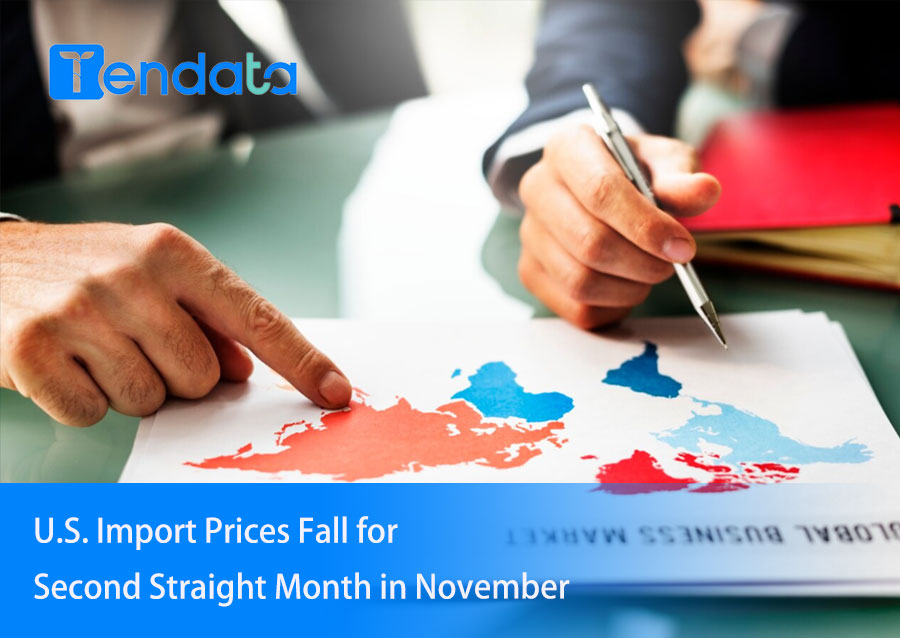 Trade Trends News
Trade Trends News
 18-12-2023
18-12-2023

U.S. import prices fell for a second straight month in November as the cost of energy products and automobiles declined, signaling that import deflation may help lower domestic inflation next year.
The U.S. Labor Department's Bureau of Labor Statistics said Thursday that import prices fell 0.4 percent last month. October data were revised to show a 0.6 percent drop in prices, not 0.8 percent as previously reported. Economists polled by Reuters had previously forecast a 0.8 percent drop in import prices excluding tariffs.
In the 12 months to November, import prices fell 1.4 percent following a 1.8 percent drop in October. Annual import prices have now fallen for 10 consecutive months.
Data this week showed that consumer prices rose moderately in November and producer prices were unchanged. Although inflation remains above the Fed's 2% target, the scope of price increases is becoming less widespread.
The Fed held interest rates steady on Wednesday and said in its new economic forecast that the historic monetary policy tightening 2024 implemented over the past two years is coming to an end and borrowing costs will be lower.
Since March 2022, the Fed has raised its policy rate by 525 basis points to its current range of 5.25%-5.50%. Financial markets favor a rate cut as early as May, according to the CME Group's FedWatch tool.
Imported fuel prices fell 5.6%, extending October's 3.7% decline. Imported food costs rebounded 0.9% after falling 0.5% from a year earlier.
Import prices excluding fuel and food rose a modest 0.1% following a 0.1% decline in October. These so-called core import prices fell 0.6% year-over-year in October.
Prices for imported capital goods were unchanged after slipping 0.1% the previous month. The cost of automobiles, parts, and engines fell 0.1% following a 0.3% increase in October.
Consumer goods (excluding autos) were unchanged following a 0.1% decline in the prior month. Higher borrowing costs are cooling domestic demand.
Prices of goods imported from China fell 0.1% after being unchanged in October. They were down 2.9% year-on-year in November.
The report also showed that export prices fell 0.9% in November, in line with October's decline. Agricultural export prices rose 0.2%, boosted by fruit and soybeans. However, prices for corn, meat, and other food and food preparations fell.
Nonagricultural export prices fell 1.0 percent. Export prices fell 5.2% in November, following a 4.7% decline in October.
Category
Leave Message for Demo Request or Questions


 T-info
T-info T-discovery
T-discovery

 My
Tendata
My
Tendata Market Analysis
Market Analysis Customer
Development
Customer
Development Competitor
Monitoring
Competitor
Monitoring Customer Relationship
Customer Relationship





































































































































